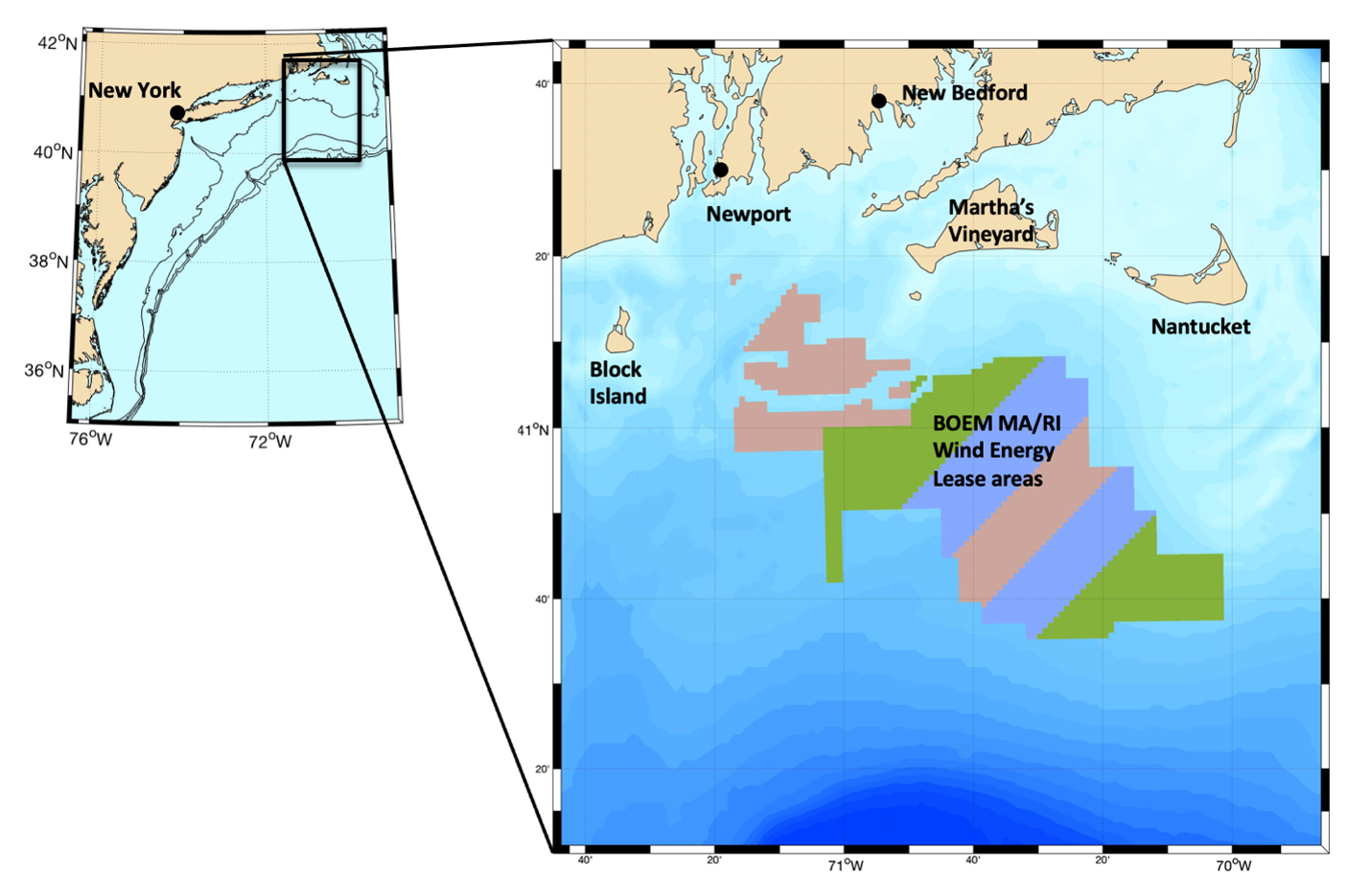Background
WFIP1 and WFIP2 demonstrated that major advances are possible in our ability to model winds and turbulence of consequence to wind energy through a combination of theoretical and numerical advances inspired by and validated with comprehensive field observations (Wilczak et al. 2015; 2019; Shaw et al. 2109a; Olson et al. 2019). Just as on land, there are still substantial, unsolved problems with forecasting winds and turbulence over the ocean. At the same time, offshore wind energy development in the U.S. is accelerating. As of August 2022, there were a total of 18 active offshore wind projects representing over 40 GW of proposed installed capacity in the U.S.. Most of the leases and active wind farms are along the coast of the northeastern U.S. states from Virginia to Massachusetts, with several proposed wind farms in the coastal Pacific.
WFIP3 is informed by input received at a workshop convened by the DOE Office of Energy Efficiency and Renewable Energy’s Wind Energy Technologies Office. The workshop, “Research Needs for Offshore Wind Resource Characterization,” was held in Alexandria, Virginia, on March 5–6, 2019 (Shaw et al. 2019b, Shaw et al, 2022). Wind resource characterization includes meteorological information to estimate annual energy production, forecasts to assure economical and reliable wind energy integration, and turbulence characterization for developing and applying design load criteria. The workshop brought together representatives from the offshore wind industry and marine environmental research community to share views on meteorological and oceanographic information needed to successfully develop offshore wind projects in the U.S. Participants noted several significant gaps in the current ability to observe the atmosphere and ocean offshore, highlighting opportunities to develop new instrumentation.
The WFIP3 study will be conducted in the Northern third of the Mid-Atlantic Bight, home to five active wind energy lease areas. The Northeastern U.S. shelf is a relatively wide shelf bordered by the Gulf Stream offshore and New England to the north. Oceanic conditions include a dramatic seasonal cycle in water temperatures and continuous ocean heat export due to a predominant westward flow of shelf waters from the cold water sources of the Gulf of Maine southwestward along the shelf.

